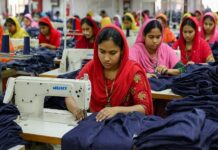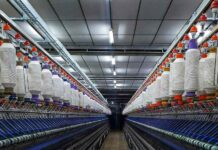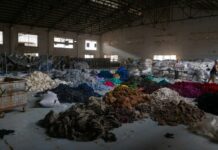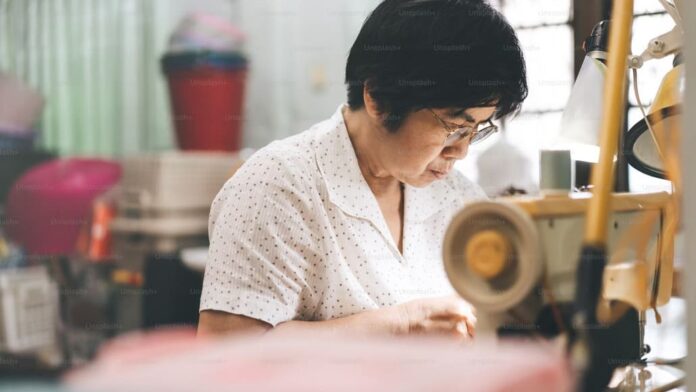In 2020, Cambodia’s garment and footwear industry faced significant challenges due to the European Union’s partial withdrawal of the Everything But Arms (EBA) trade scheme. This withdrawal subjected some of Cambodia’s exports to import duties in the EU, a market where Cambodian products previously enjoyed duty-free access. As a result, Cambodian apparel exports decline, and the country began redirecting a significant portion of its garment exports to other countries, including the US, while exports to the EU saw a sharp drop.
Decline in Apparel Exports to EAEU
Cambodia’s apparel exports to the Eurasian Economic Union (EAEU) dropped drastically by 36.56% in 2020, falling to $112.45 million from $177.27 million in 2019. The steep decline occurred primarily between April and June 2020, before the sector began to recover in July 2020.
Cambodia’s Apparel Industry: An Economic Backbone
The apparel industry is vital to Cambodia’s economy, accounting for more than half of the country’s total merchandise exports and forming a major part of its manufacturing sector. However, most Cambodian apparel manufacturers still rely on the cut-make-trim (CMT) production method due to limited access to advanced technologies and lower capital. The United States and the European Union remain Cambodia’s largest export markets for apparel, with approximately three-quarters of its total apparel exports destined for these regions.
Under the EBA scheme, Cambodia benefits from its Least Developed Country (LDC) status, allowing over 90% of its apparel exports to enter the EU duty-free. However, the partial withdrawal of EBA privileges, which took effect on August 12, 2020, resulted in import duties being applied to certain Cambodian garment and footwear products. Consequently, Cambodia shifted its focus to markets like the US, Russia, Belarus, and Kazakhstan to compensate for the decline in EU demand.
Impact of the COVID-19 Pandemic
In April 2020, Cambodia’s garment industry was severely impacted by the COVID-19 pandemic, which forced approximately 130 apparel factories to shut down by the end of the month. This crisis persisted until June 2020, leading to the suspension of operations at around 600 companies and the loss of 150,000 garment workers’ jobs—approximately 25% of the total workforce.
The pandemic’s impact was particularly hard on women, who make up 80% of Cambodia’s garment workforce, many of them under the age of 35. These workers often shoulder childcare responsibilities, and the factory closures exacerbated economic insecurity and income pressures. In response to the crisis, major global brands such as H&M, Target, PVH, and M&S committed to honoring their existing orders to support Cambodia’s struggling industry.
Recovery and Shift to the US Market
Cambodia’s apparel exports began to recover by June 2020, driven by increased demand from US buyers. American brands absorbed the excess capacity left behind as EU customers reduced their purchases from Cambodia. According to the Asian Development Bank, the country’s economy was projected to rebound to a 5.9% growth rate in 2021, supported by government initiatives, social assistance programs, and financial aid to small and medium-sized enterprises.
In 2019, the US accounted for 26.8% of Cambodia’s total exports, slightly outpacing the EU, which stood at 25%. This gap was expected to widen further in 2021, with garments and footwear making up the majority of Cambodia’s exports to the US. Despite the shift, Cambodian apparel exports decline illustrates the challenges the nation continues to face in diversifying its markets.
Supply Chain Challenges
The pandemic also disrupted Cambodia’s supply chain for inputs used in garment manufacturing, particularly imports from China. Imports of fabrics from China fell by 50.18% in 2020, dropping to $2.29 billion from $4.61 billion in 2019. Yarn imports experienced a 14.47% decline, totaling $188.33 million in 2020 compared to $220.18 million in 2019. Fibre imports from China also saw a significant drop of 22.31%, falling to $4.02 billion from $5.17 billion in 2019.
Outlook for the Future
The Cambodian apparel sector remains a cornerstone of the country’s economy, and efforts are underway to adapt to the shifting global trade environment. Despite the challenges posed by the EU’s partial EBA withdrawal and the pandemic, Cambodia’s increased focus on the US market and diversification of export destinations demonstrate resilience. With strong government policies and international support, Cambodia’s garment industry is poised to recover and continue contributing significantly to the nation’s economic growth.


































